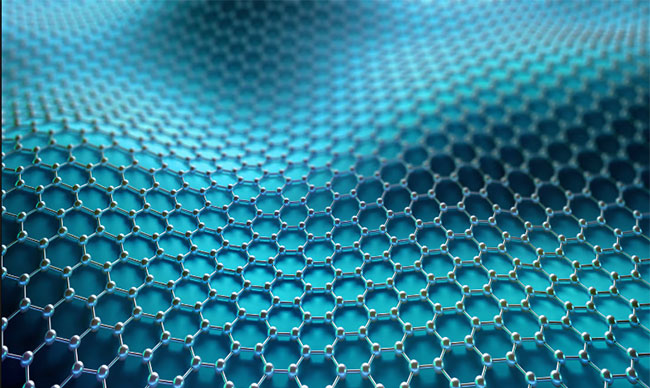Engineers at the University of Vienna have developed a new composite material that creates effective filters to remove organic pollutants from water. The system utilizes ultra-porous “nano sponge” embedded on a graphene sheet.
The key to the new filters is a layer of material known as Covalent Organic Frameworks (COFs). These structures are extremely porous, providing a large surface area contained within a small space, which means they are effective at capturing a significant amount of molecules. Related materials called Metal-Organic Frameworks (MOFs) are being researched for applications in carbon capture, desalination, or extracting drinking water from thin air, and COFs may have a similar set of functionalities.

Researchers have developed a nano sponge made from Covalent Organic Frameworks (COF) on graphene that can effectively filter industrial pollutants from water.
In this new study, the researchers focused on using COFs to remove organic dyes from water. These chemicals are common pollutants found in industrial wastewater and can be toxic and carcinogenic.
The research team has modified COFs to selectively retain organic dye molecules. This involved shaping the pores to appropriate dimensions ranging from 0.8 to 1.6 nanometers and imparting a negative charge to the surface to attract positively charged dye molecules.
However, there was another barrier to overcome when the material was used in powder form; the pores on the outer edges would fill with molecules first, leaving the central pores empty and essentially useless. Therefore, the team developed a method to disperse COFs by growing them on a graphene sheet.
The final result is a two-nanometer thick layer of COF on a single-atom-thick graphene layer, maximizing the material’s ability to retain organic dye molecules. Graphene itself has relatively large pores, allowing water to flow through quickly while the COF functions.
The researchers stated: “The large porous holes of the graphene network combined with the ultra-thin COF layer and its large number of adsorption sites allow for exceptionally fast and efficient wastewater treatment.” According to the research team, this technique is quite cost-effective. It does not require large amounts of graphene, and COFs can be cleaned and reused.


















































